At 26 years young, the browser will soon make its way to the tech graveyard.
In shocking news to a handful of users, Microsoft announced that it is finally getting rid of Internet Explorer.
The browser, which previously dominated 95% of the market, was reportedly used by less than 0.5% of internet users.
When someone opens Internet Explorer, they’ll soon be shown an alert redirecting them to Microsoft’s newer Edge browser, which is used by around 4% of online users.
For some, Internet Explorer has always been a slow browser that only served to install better browsers such as Google Chrome. For others, it represents one of the most important pieces of software in the history of computing.
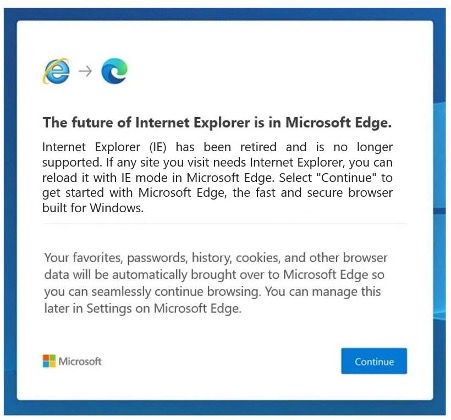
Internet Explorer was many people’s first browser, the first portal they used to connect to the internet.
It helped accelerate Microsoft’s growth and was even the default web browser on macOS many years ago (though former Apple CEO Steve Jobs was booed on stage when he made the announcement).
But why did Microsoft’s hot dominant browser come crashing down?
To understand Microsoft’s rise and fall, you’ll need a recap of the browser war that took place in the late 90s. At the time, a browser called Netscape was the most used. Microsoft released Internet Explorer to grab its own share of the browser market.
Over the next five years, both browsers released new features rapidly.
Microsoft made Internet Explorer free, and Netscape followed suit. Internet Explorer’s market share was only 18%, while Netscape dominated with 72% (10% was usage from other browsers).
Eventually, Microsoft bundled Internet Explorer into Windows by default, which had a 90% PC market share at the time.
Microsoft’s strategy at the time was allegedly to “cut off Netscape’s air supply”, and it worked. By 2001, Internet Explorer owned approximately 90% of the internet browser market.
Winning the war was catastrophic for Microsoft. Due to a lack of competition, the company slowed down updates to Internet Explorer, releasing only one major update between 2001 and 2006.
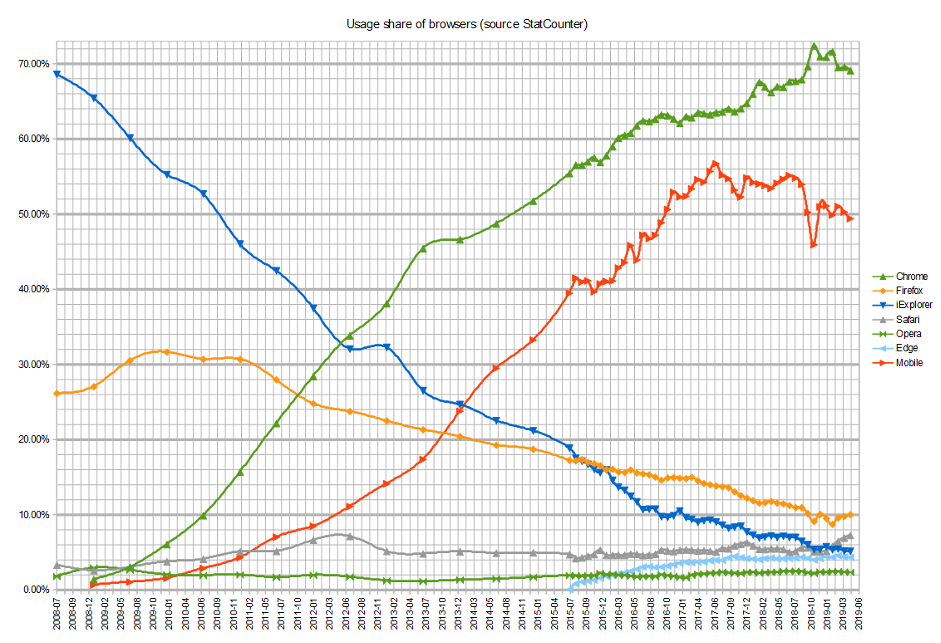
This left room for competing browsers such as Firefox (based on Netscape’s source code), Opera and Safari to release faster and more feature-rich browsers.
Eventually, Google released Google Chrome in 2008, becoming the most popular browser due to its faster speed.
The popularity of iOS and Android also contributed to Internet Explorer’s decline. Both mobile operating systems bundled their own respective browsers, Safari and Chrome.
Microsoft never made an Internet Explorer app for iOS or Android.
Microsoft has been trying to kill Internet Explorer for many years
Microsoft has encouraged users to switch to its newer Edge browser since it launched in 2015.
Unfortunately for the company, legacy users were still using Internet Explorer instead of switching, likely because they’re not tech-savvy enough to download new browsers.
Additionally, websites such as Japan Pension Service can only be accessed through Internet Explorer. As a result, Microsoft has been unable to kill its now-infamous browser completely.
Microsoft Edge includes an “IE mode” setting to access these legacy websites.
Where are the memes?
Internet Explorer was great at two things:
- Downloading other browsers
- Getting mocked for memes
We couldn’t share news of Internet Explorer’s death with you without sharing some memes too! Here are our favourite ones:
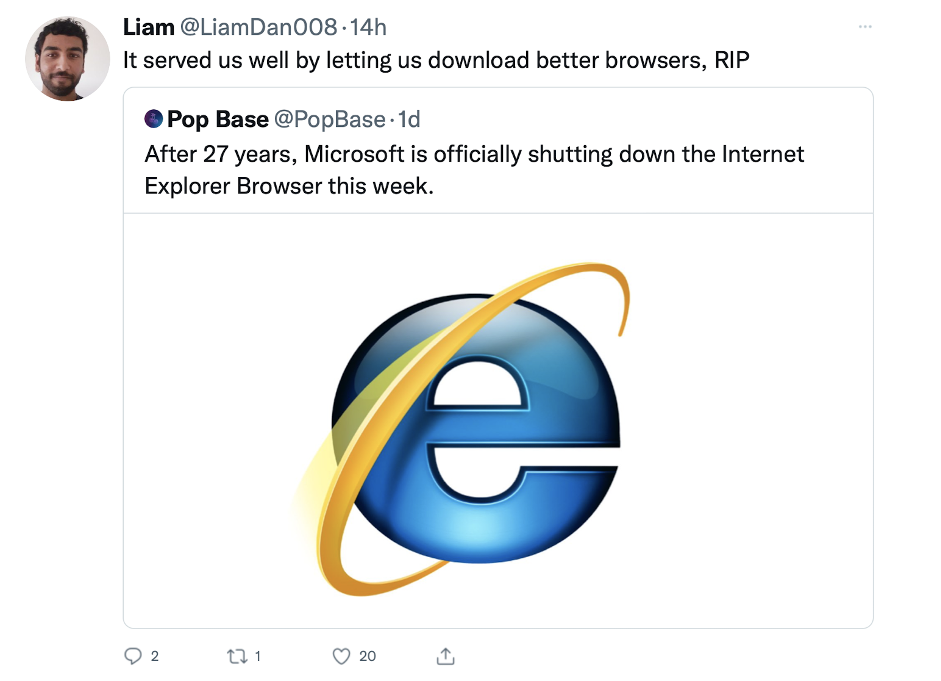
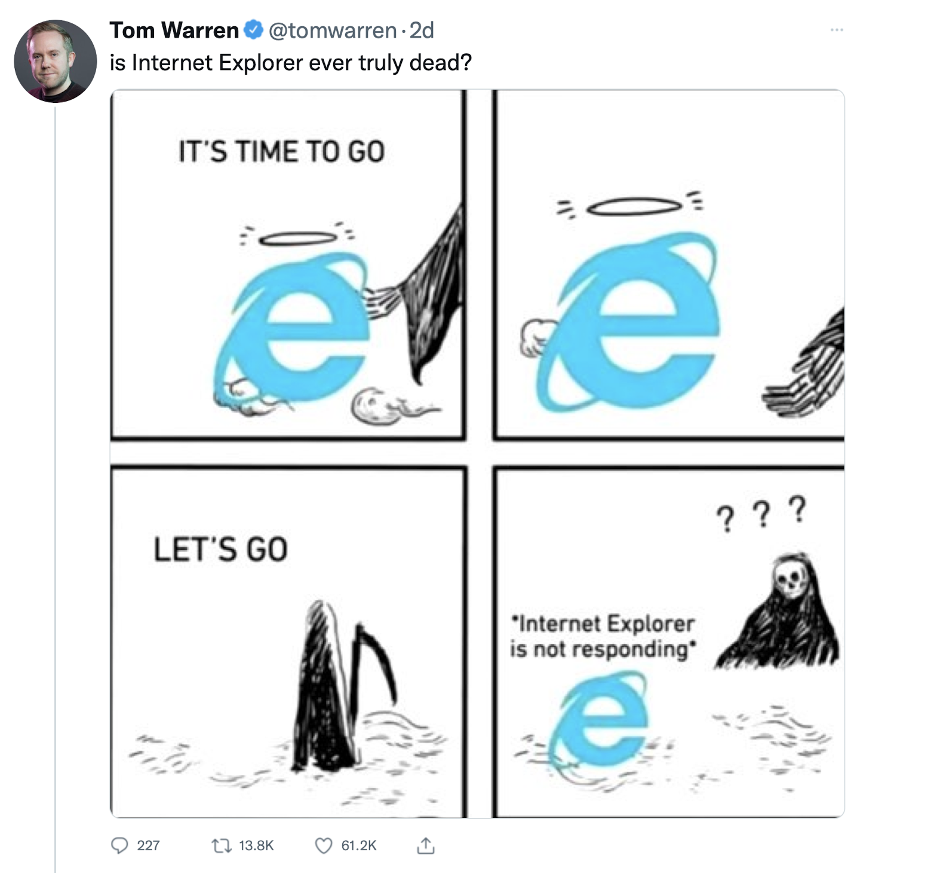
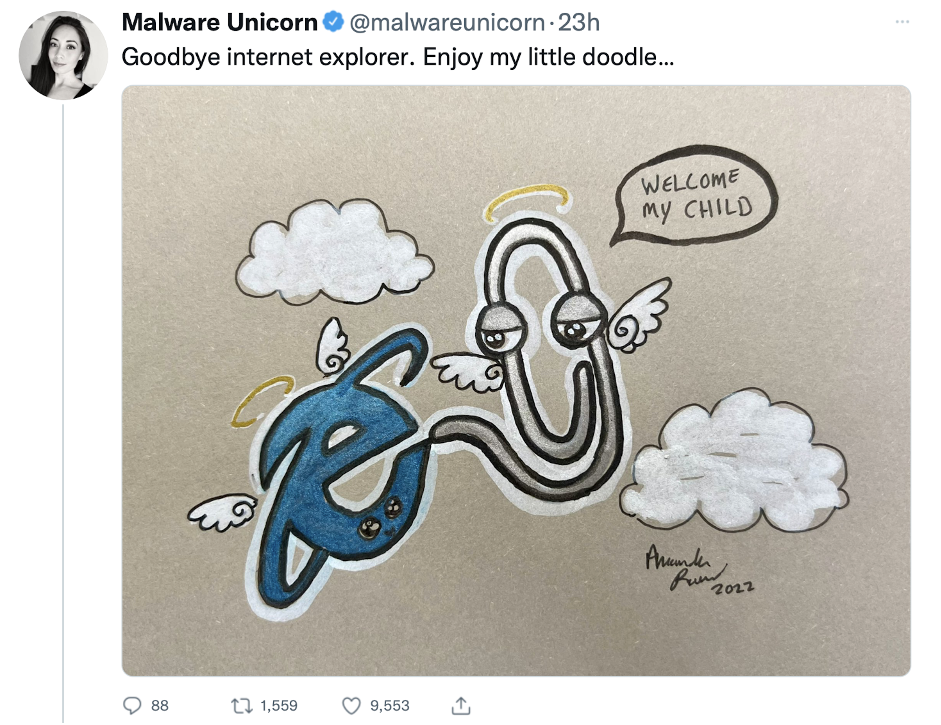

How do you feel about the death of Internet Explorer? Are you feeling nostalgia watching it disappear, or are you just enjoying the memes?







